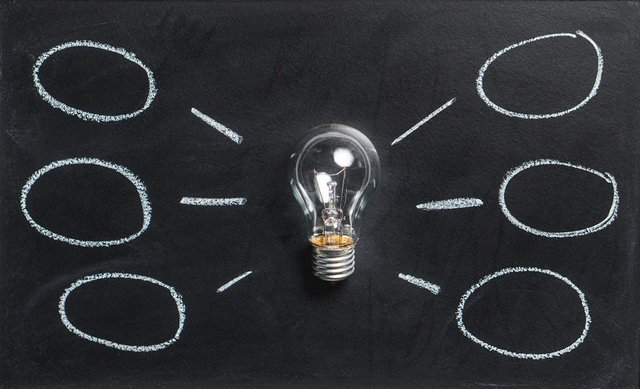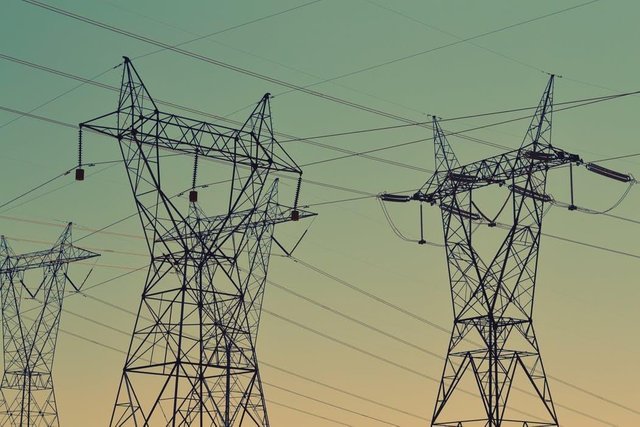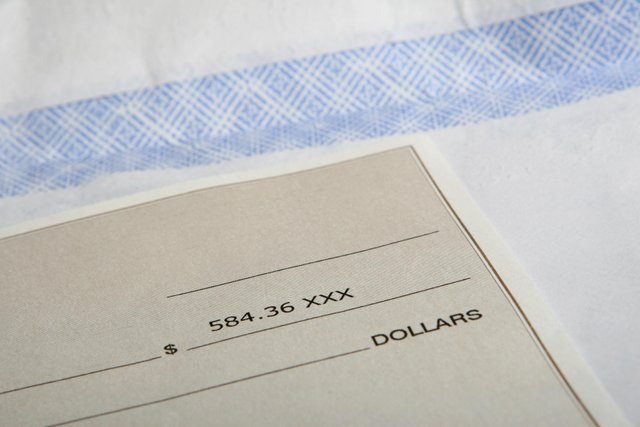Learn More About Your Electricity Tariff And It's Types.
Hello steemit friends, i hope you are doing great and I'm glad you came around today. Today on my article, I'm going to be talking on tariff and as well as power factor tariff and it's correction. You might have asked one of these questions " where do electricity or electric power comes from?", "why do we consumers pay for electricity?", " why do i pay more on electricity than the man in my neighbourhood?", we have indeed asked a lot of questions about these. Few days back, close to my neighbourhood a man got angry because he felt he's paying too much on electricity, thinking that the electricity power company is over charging, I walked up to the man and explain the reason for that amount being charged and this i would love to share with everyone on the block chain and also my steemstem friends.
TARIFF

The electricity(electrical power) that we consumers consume is produced in different generating station and they transmitted to us at a cost and this cost is not fixed. The consumer need to pay for the use of electric power or electricity not only to cover the cost by which the electric power is being generated and transmitted but also for depreciation,infrastructural development and profit for the generating company. Hence this makes electricity a commodity that could be bought and sold, especially in Nigeria system today where different organisations trade in the power sector.
In Nigeria today, Electricity is generated by both government and also private sector. All generated power( be it from government owned generating station or from independent power plants) are metered and sold to the transmission company of Nigeria (TCN), (TCN) is the government establishment that maintain and operate the national grid in the network of transmission lines in Nigeria. However, TCN does not make this purchase directly, the buyer and seller of electricity is handled by another government establishment called "Nigerian Bulk Electricity Trading (NBET) company".
You might wonder the generating companies and TCN agree on the pricing of this commodity called electricity. Do they haggle over it just as the way we go to be market and haggle the things we buy from the buyer? No, of course. That is where the regulatory body called Nigeria Electricity Regulatory Commission NERC comes in, the NERC is the organisation that fix suitable price for the sale (whether bulk or retail) of electricity in Nigeria. At the fixed intervals, they carry out economic studies and determine the appropriate per unit cost of electricity in Nigeria. The distribution companies (DISCO's) also buy electricity from NBET at regulated price by NERC. They then finally sell to the consumers. All prices right from generation to consumption of electricity is set by NERC.
SO,

Obviously, the electricity tariff we consume is being set by electricity regulatory companies in our various countries. However, there are different types of tariff for different categories of consumers. Tariff may be classified according to the following categories of consumers listed below.
(a)• Domestic premises- Tariff for electrical energy used for domestic purpose in a private residence, it usually consists of KWh ( kilowatt per hour) charge plus a fixed charge depending on the number of room in your house or its floor area.
(b)• Off-Peak Tariff- this applies to the users who consume electricity during the period between 10pm and 7.30am, it consists of KWh charge lower than that of domestic premises plus a fixed charge. This tariff helps to encourage consumers who utilities electricity during Off-Peak period.
(c)• Combined Premises- this applies to cost charge for electricity on a building for trade, business,professional purpose as well as domestic. each. e.g a house with shops and room accommodation.
(d)• Commercial- the tariff on building that is being used for commercial purposes only, it is similar to domestic tariff expect that the fixed charge is higher.
(e)• Agricultural- this tariff applies to farms, market or other agricultural facilities. It is similar to commercial.
(f)• Industrial- this tariff is applicable to industrial premises were large KVA is drawn. The industrial tariff is a monthly maximum demand tariff.
The overall effect of this tariff is that the lower the power factor, the greater the average cost of electricity to the consumers of each kilowatt per hour. For load exceeding 100KVA, consumers are encouraged to take supply at 11KV or 33KV. The injection substation to step down from 11KV or 33KV to 415V at a frequency of 50Hz for consumption, this is then belong to the consumer. This will help to eliminate additional charges that the distribution company would have made to cover interest and depreciation on the substation, including cost of transformer losses and overheads.
Why should we have a Tariff System?

A good tariff system will help the power stations to recover the cost of producing electricity thereby ensuring continuous production and availability of electricity, this will also help the electricity generating companies to recover the amount spent, to ensure that these electrical energy or electricity generated gets to us (consumer). A lot is being spent on maintenance and also on operation(equipments), with a good tariff system, these amount can be recovered. Knowing fully well that one of the major aim of any business sector is to be able to generate reasonable profit on the invested capital, a good tariff helps the generating stations to achieve that and also ensure that we consumers are being charged exponentially (not excessively)
Characteristics Of A Good Tariff

From the few things said about tariff, we found out that these companies does not just put up any form of tariff to suit their interest rather these tariff entails some characteristics to ensure suitability for we consumers and these characteristics are listed below.
(i)• A good tariff must be fair on all consumers of electricity at different levels e.g large consumers should pay a little less than small consumers. Also a consumer with fixed load should pay less than one with unpredictable variable load.
(ii)• A good tariff should ensure proper return on investment i.e there should be a reasonable profit after covering of transmission,depreciation,generation, etc.
(iii)• A good tariff must be clear and simple for everyone(consumers) to read and understand without seeking for anyone for help, it should also clearly state the unit of power consumed, the cost per unit kilowatt(kw) and the total cost of energy used.
(iv)• Even the child will always want something attractive, so it's best to consider that as a factor when putting out a good tariff. This means that it must be such that the consumer is encourage to use more power and pay with ease without any form of question.
(v)• The generating companies has set up a good tariff to ensure it generates a reasonable profit. The tariff must not exploit the consumers especially in case were the distribution company has no rival or competitor.
In the past few years, the government owned generating power stations has be a useful revenue function to help the government to provide fund through the income from tariff and this has been said to be the major reason why tariff was made on electricity but in most develop countries, this importance has been reduced through the government's systematic tax code. Outside the view of revenue as a function, there are other major functions of tariff which also includes protection of most domestic industries.
What Are The Types Of Tariff?

If you are familiar with the pay slip of electricity and you might have come across that given to the man at your next door, although these pay slip may be similar or may not be. The difference in this is as a result of the types of tariff and they are listed as follows:
1• Uniform rate Tarrif: this type of tariff has a uniform or fixed rate per unit of the consumed electrical energy that we consumers make use of and this type of tariff is then referred to as "pay as you use". The unit rate of electrical energy (Electricity) consumed does not increase or decrease and as a result of this, there is no discount for consumers to consume more electricity.
Despite the simplicity of this type of tariff, there are also few disadvantages which are:
i•This type of tariff does not encourage we consumers to consume electrical energy (Electricity) because despite what you consume, whether average load is less or not, the fixed rate does not change rather remains constant.
ii• From that mentioned in (i), it very obvious that in this type of tariff, there is no discrimination amongst consumers. So despite the amount of load you have whether big or small , all consumers under this type of tariff will still have to pay the same fixed charge evenly and also in this type of tariff, the delivery cost to consumers per unit is very high so I will advice you not to use this type of tariff if your connected load is not much.
2• Flat Rate Tariff: this type of tariff is preferable for consumers with lesser load and in this type of tariff, consumers are being categorised base on their loads and each of this different categories are being charged at a rate that differ from each other. This type of tariff is better than that of the uniform rate tariff because of its fairness.
Just as there are advantages of this type of tariff, over the uniform rate tariff, there are also some few disadvantages which i with state below:
i•In this type of tariff, no bonus is given to consumers for consuming more electrical power, making consumers who consumer more to pay the same charge as those who consume less within that same category.
ii• Since in this type of tariff, different rates are being applied for different categories of load consumed, different meters would also be required at each category and the cost of purchasing these meters makes this type of tariff more expensive than the ones listed above.
3• Block Rate Tariff: In this type of tariff, electrical energy is being categorised into blocks and retrogressively charged at different rate. The major advantage of this type of tariff over the others listed above is that it encourages the consumers to consume more energy and as a result increases the system load factor and reduces the cost in which this electrical energy is being produce. It's main disadvantage is that the maximum demand of the consumer can not be measured in this type of tariff and it's applicable to various commercial although small.
4•Power Factor Tariff: This type of tariff is based on the consumer's load power factor, most of the equipments that we have at home are inductive in nature, this implies that the load have lagging current (the voltage leads the current), the measured angle between the current and voltage is what i refer to as power factor, inductive loads draws more current and this will result to losses on the transmission lines and consumers with low power factor will be charge more.
There are various ways in which the consumers can be able to correct this power factor because the higher it is in this type of tariff, the lesser the amount you will be charge for usage of electricity or lower the rate in which your unit runs for those using prepaid meters. The following are used to correct this and they are:
i•Static capacitors.
ii•Synchronous condenser.
iii• phase advancers.
These equipments has capacitive load which have leading power factor, this help to neutralises the lagging power factor of the inductive load.
5• Two Part Tariff and The Maximum Demand Tariff: As the name implies "two part", in this type tariff we consumers are being charge for electrical energy base on two following part which includes "the running charge and the fixed charge". The running charge is based on the maximum demand, for example a consumers total load(light bulbs, electronics equipments, receptacles etc.) in his house, the maximum amount of electrical energy that will cover these total load assuming everything was to be active or working, the generation/distribution stations tend to supply the consumers these maximum electricity so that when the consumers decided to make all his loads working, all will be working. The running charge is base on the unit of electricity that the consumers consumed, this implies that not all consumers on this type of Tarrif have the same unit. Me as a consumer, i might decided to put all my lighting bulbs OFF all day and make my running charge lesser than another consumer who decided to turn ON all his lighting bulb during the day. The reason why this type of tariff is not preferable is because despite the fact that you didn't use electricity, you still have to pay for fixed charge and sometimes, the consumer's maximum demand may not the properly measure and this might cause the consumer more in payment. "The Maximum Demand" is similar to that of the two part tariff but the only difference is that in this type of tariff, consumers tend to acquire meters which help to calculate their maximum demand.
After all said about tariff, you will find out that the bill that you are being charged for is not just based on the amount of electrical energy (Electricity) you consumed but also the cost in which electricity is being generated and the cost used in transmitting electricity to your premises or work place. i hope you enjoyed reading through and feel free to ask any questions and i will be available to provide you answers to be best i can and if you feel this article will be useful for a friend, you can also feel free to resteem to enlighten. THANK YOU.
1•[www.meti.go.jp/english/.../gCT0004e.PDF ON TARIFF ]
2•[https://www.iea.org/.../NIFERIA_MYTO...PDF ON NIGERIAN ELECTRICITY REGULATORY COMMISSION ]
3• PRINCIPLES OF POWER SYSTEM V.K.MEHTA, ROHIT MEHTA. S.CHAND 4TH REVISED EDITION 2008
4•ELECTRIC POWER SYSTEMS A CONCEPTUAL INTRODUCTION BY ALEXANDRA VON MEIER

With the major objective of steemSTEM to advance Science, Technology, Engineering and Mathematics on the Steem blockchain. In the event that you wish to help the steemSTEM to promote their major objectives, which can be done by contributing on STEM content and using the tag #steemstem , also support steemstem creators ,join the curation trail and you can also delegate SP to steemstem.
The unit of My prepaid runs like that of the speed of light..lol.thanks a lot @hboi for this interesting article because i just found the solution to that...#inductive loads
I am new on this platform, have heard a lot about steemstem and what they support and i will love to be a member also and once again thank you.
Welcome to steemit @stembuzz, I'm glad you found the post interesting. I just went through your post and I saw you haven't drop any post, I hope to see more of your works. you can learn more about steemstem on their main account @steemstem and also on their discord channel https://discord.gg/K7Q6yH.
Enjoy!
welcome @stembuzz to steemstem. You can catch-up more on the steemstem discord channel
This is an interesting article @hboi. If we the consumers can help reduce the losses in transmission, is it going to affect the tariffs. If yes how do you think the consumers can try in their own little way to reduce the losses.
These losses ( I2 R) on distribution lines are as a result of large currents which comes from low power factor as i said earlier in the article and this large currents(lagging currents) result from inductive power loads which most of our home equipment are made of and therefore takes lagging currents, in other for the consumers to correct this low power factor, he/she has to make use of devices like static capacitor and connect it in parallel to the load and this will help correct the losses and also help to reduce the rate of being charge for electricity.. thanks for the question @fona
All right thank you @hboi for your response, I have learnt much from your article :)
You are welcome.
The post is very informative not everyone have this knowledge
Thanks @fredoski , information is power.
I always thought i was been charged for the amount of electricity i consume only, never knew the cost of production and transmission were underlying factors.
Thanks Hboi for this interesting article.
@driuds you are welcome.
Quite a very interesting post but taking Nigeria for instance I think those in charge of the power supply have a lot to do because they overcharge consumers all the time all they'll even tell you that their devices are faulty. These days they just give fixed amounts and don't rrally care how much you use so probably the man you talked about that was complaining was right
Hahaha.indeed the government also have a lot to play same with the consumers, do you know that in using the two part tariff system and as a consumer, you may feel like travelling, it's best you write to the power company that you are travelling and they won't charge you Base on the fixed charge for that period else despite you didn't consume electricity for that period you will still be charge..lot of persons don't know about this fact.